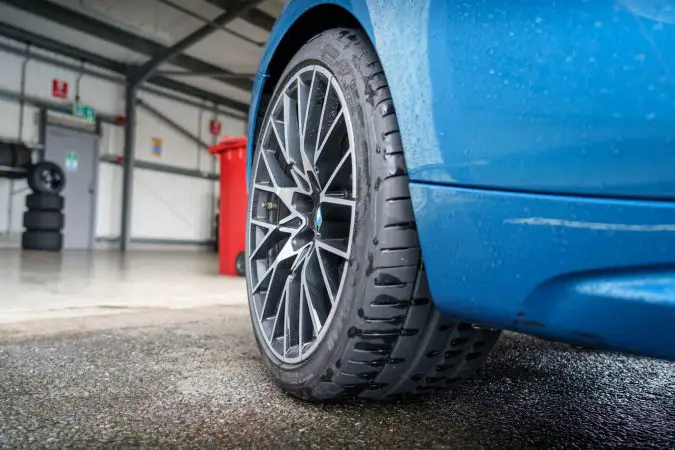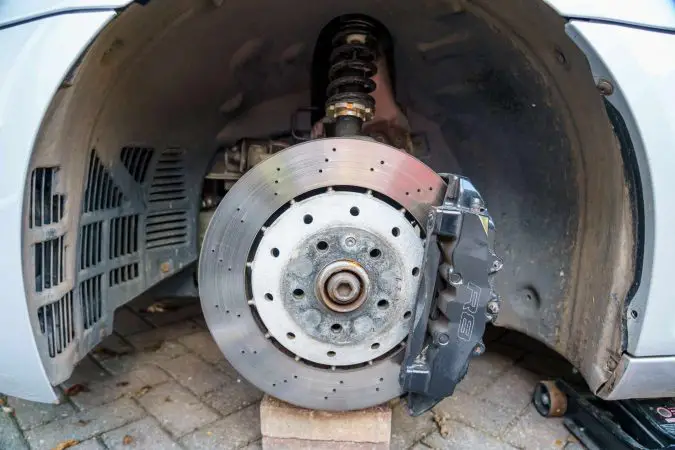When comparing strut vs shock, it’s clear that struts are more important. It is stated that while an automobile can be driven without shocks (albeit not very safely), it cannot be driven without struts. Struts are often found in the vehicle’s front end, and shocks often are found in the vehicle’s back end.
Shocks and struts work together to provide a smooth and pleasant ride. Shocks and struts are included in automobiles for more than just comfort, as they also increase the vehicle’s safety by keeping it in orderly suspension. When driving over a speed bump, gravel, or uneven roads, you’ll be grateful that your vehicle’s shocks and struts are in good operating order.
This article should clear up any confusion you might have concerning the differences between strut vs shock.
Let’s take a look at what a shock and a strut are, what they do, and how they fail.
- What Are Shocks?
- Types Of Shocks
- What Are Struts?
- The Difference?
- Symptoms Of Failure
- Which One?
- How To Replace
What Exactly Are Shocks?
To understand the differences between strut vs shock in your vehicle, you must first understand each component. A coil spring is utilized in most passenger cars to assist in absorbing road surface disruptions and impacts. This is due to the spring compressing and expanding in response to the up and down movement of the wheels.
The coil absorbs a lot of the movement, but uneven roads and subsequent impact and movement generate a rocking motion that early drivers found annoying, which is why the shock absorber was invented in the first place.
Shock absorbers are used to keep your car from bouncing and swaying while on the road. They don’t truly withstand the weight of the vehicle. Shocks are an important element of the suspension system, although they aren’t required for your automobile or truck to function. However, you won’t have the most comfortable ride without shocks, but your vehicle will still function.
The fundamental function of standard shock absorbers, often known as dampers in traditional circles, is to control the amount of energy transmitted from the road to the vehicle’s suspension and related components. Shock absorbers use hydraulic shock fluid inside them to distribute energy, which will be controlled by piston valves.
The shock piston regulates the amount and rate of fluid flow through the shock, providing the vehicle with variable damping properties. The speed of the suspension and the design of the piston, valve shims, and orifices affect the amount of resistance created by a shock absorber. Shock absorbers today are all velocity-sensitive hydraulic damping systems, which implies that the more resistance the shock absorber provides, the faster the suspension moves.
Types Of Shock Absorber:
Shock absorbers are divided into three categories:
1. Mono-Tube Shock Absorber
Mono-tube or gas shock absorbers are the most frequent form of shock absorber used. This component is made out of a steel tube with a rod and piston installed inside. The piston pushes upward when the car drives over a bump and is gently compressed by gas for a smoother transition.
2. Dual or Twin-Tube Shock
Two vertical tubes filled with hydraulic fluid rather than gas make up a dual or twin-tube shock. Fluid is moved to the secondary tube as it is compressed.
3. Coil-Over Shocks
Vehicles with front-mounted shock absorbers are known as coil-over shocks because the shock absorber is ‘covered’ by a coil spring.
What Precisely Are Struts?
Struts, on the other hand, are a functional unit of your suspension system that must be present and functional for the car to function. Struts, unlike shocks, support a vehicle’s weight. They are also required to keep your car aligned, making them necessary for steering and movement as well as the reduction of bounce.
You wouldn’t be able to steer if your vehicle didn’t have struts. To have better control and mobility, struts should obviously be in good shape. The shock absorber, as we now know, is independent of the coil spring, whereas the strut really contains both the spring and the shock absorber.
A Common Form Of Strut:
The MacPherson strut is the most often used form of the strut. This component, which combines the strut and spring into a single element, is extremely robust and long-lasting. Some automobiles have a single strut with a coil spring that is separate. Struts are usually positioned on a steering knuckle, with the top of the ‘spring’ supporting the body.
Because struts are substantially smaller than shock absorbers, they are commonly implemented in automobiles with compressed suspension travel. When repairing a strut, you must install a completely new unit. However, a shock absorber or its spring can be replaced as needed.
In truth, changing a shock absorber is a rather straightforward procedure that will generally resolve your issue. Replacing a strut, on the other hand, necessitates altering the car’s alignment, which is a significantly more difficult and typically expensive task.
Are Struts Included In All Vehicles?
Cars commonly use shocks on one axle and struts on the other. Struts, on the other hand, aren’t found on every vehicle. Your car may employ independent springs and shocks instead of struts, depending on its design. There are a few ways to determine whether your car is equipped with shocks or struts.
Inspect Your Vehicle From Below
Shocks are usually installed vertically behind the tires if your vehicle has them. Shocks are often shaped like a spring or a pump. Struts, on the other hand, are typically positioned horizontally and seem like a wheel extension. You should inspect both the front and rear wheels because you may have both shocks and struts.
Get A Technician To Check It Out
Despite the fact that most struts contain a spring and pump system, not all struts have springs. If you’re not sure if your car has struts or shocks, stop by your local tire shop and have one of their professionals check it out.
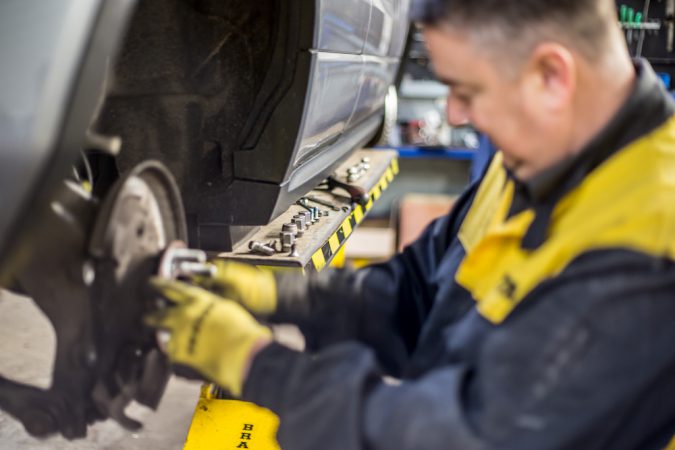
Strut vs Shock: What’s The Difference?
When identifying the differences between strut vs shock, you must first understand the function, structure, and operation of each component in your car. Essentially, each of these elements is meant to do the same function, but in different ways. When driving on rough terrain, both the struts and shocks reduce and soften the spring action in your car, preventing excessive bouncing and vibration.
When comparing strut vs shock, you’ll see that they have radically different elements, even though they do the same job. A strut cannot be replaced by a shock and vice versa.
Build
The fundamental distinction between struts and shocks is that a strut is a part of your vehicle’s suspension system, whereas a shock is an additional element. A strut is also an important component of the car’s steering system, and its quality and efficiency might be affected.
Angles
The strut is critical to the suspension system because it controls the camber and caster angles of your car. These angles vary based on the position of the strut, which serves as a link and pivot point for the steering system.
Because of this, you will need to pay for a wheel alignment while replacing the struts. When comparing strut vs shock in this scenario, struts will cost you far more out of pocket than replacing your car’s shocks.
Ease Of Handling
When comparing the quality performance of strut vs shock, each option provides different advantages for your car and you as a driver. When comparing strut vs shock, one advantage that shock absorbers offer over struts is improved handling and smoother driving possibilities.
Most car owners may consider shocks to be more advantageous and efficient because they are easy to operate and provide a smooth ride with less pressure and stress on the driver.
Replacement Efficacy
You’ll generally just need to spend a few minutes at the auto shop to change shocks, and if you have basic mechanic abilities, you can even do it at home. Because shocks can have a large impact on how the car moves, you need to be certain that you’re replacing them correctly to ensure your safety.
Strut replacement, on the other hand, can be time-consuming and even dangerous if done incorrectly. As a result, this is always a job that should be left to the pros. The caster and camber angles of the car are influenced by struts, and you can change them if the struts are not in the proper place. Strut repairs are almost often accompanied by a wheel alignment, which makes the job much more complicated.
Expense
When comparing strut vs shock, shocks may provide superior handling, but struts have the advantage of offering more value for your money. Struts, rather than shocks, are a good option if you want to save money on vehicle repairs and replacements.
Symptoms Of Shocks And Struts Failure
Now that you understand the distinction between strut vs shock. You might be wondering if your car’s shocks or struts need to be replaced. The type of vehicle you choose can make a major impact depending on how you drive it. And whether it’s used for a lot of off-roading, motorway driving, or just doing errands.
Shocks and struts should be examined every 12,500 miles or so, on average. A replacement may commence every 50,000 or so miles. You may also look at your vehicle’s suggested maintenance plan in the owner’s manual, which will give you a decent sense of how often you should repair your struts or shocks.
There are a few additional ways to know if your automobile needs to be examined if you don’t want to spend hours looking for it. These indications and symptoms of poor or failing shocks and struts might help you decide whether or not it’s time to have your car repaired or replaced.
Vibration In The Steering Wheel
The piston seal inside the shocks may not be in the correct position if it has worn down over time or has been broken due to extended use. Fluid can flow past the valve if the shock is not positioned correctly. The flow of fluid will result in an improper fluid level and leaks, creating excessive vibration in the steering wheel with every bump in the road or uneven terrain.
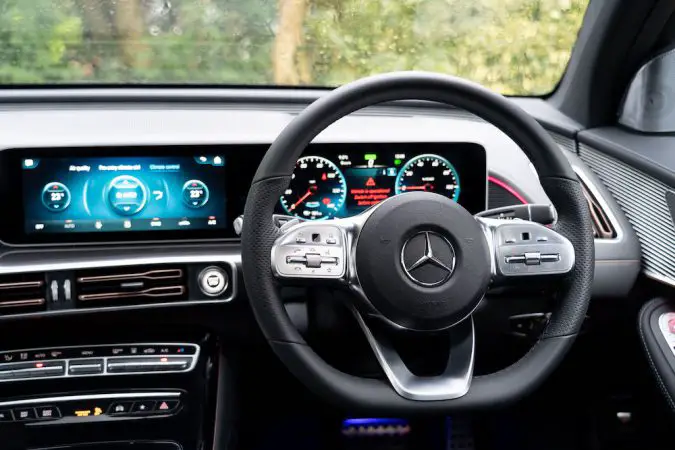
Swerving While Applying The Brake
If the piston seal or valve inside the shock fails over time, the fluid will flow at an unmanageable rate, causing a little shift in steering or a turn of the steering wheel to create severe piston movement. This also applies to a light press on the brake pedal, as this motion causes the vehicle to shift violently to one side.
When your car swerves while driving, you may have observed this extreme shift. The weight of the brake pedal causes your car to nose dive. And causing it to jolt forward and dip down while braking. Despite differences between strut vs shock, nose-diving is exceedingly risky in both cases and can result in a deadly situation on the road if other vehicles are involved.
Braking Is Less Efficient
If you notice that it takes a long time for the car to stop when you apply the brakes. This may indicate that the shocks are worn out and broken. When comparing strut vs shock, both cases of damaged shocks or struts can result in a significant increase in stopping distance. This is due to the additional time required by the car to absorb all of the piston rod lengths.
Tire Wear that is Uneven
When inspecting your tires after a wheel or tire change and feeling uneven while driving on flat roads. You may usually detect uneven tire wear and treads. The most common cause of this problem is a worn shock. So, be wary of the symptoms of bad shocks. This makes it impossible to maintain the tires firmly and evenly on the ground.
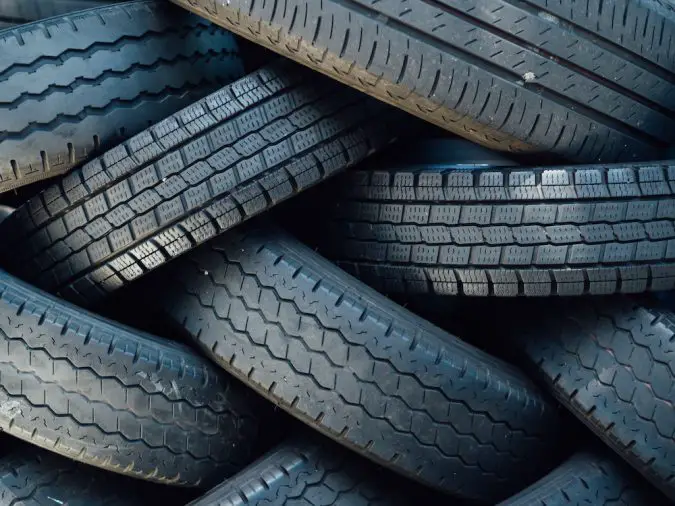
Struts and shocks can both be damaged to the point that a minor bounce might cause the vehicle to travel unevenly over the road, resulting in uneven tire wear. As the tire spins and rotates, a specific contact region will come into touch with the road more frequently than other portions. This results in a faster rate of tire breakdown in that particular area.
Fluid Leakage
You may notice that the seals surrounding the shaft in your shocks do not appear to be in good shape when visually inspecting them. If this is the case, the shock will start leaking fluid down the side of the mechanism and onto the ground. This significant fluid loss can impair the shock’s capacity to function properly. And, this makes it difficult to determine whether you should buy struts or shocks.
The Bushing Is Cracked
Some points on each end of the shock allow it to connect securely to the vehicle. Rubber bushings are used in these attachments to maintain that the connection is tight and secure. If one of these bushings were to fracture or shatter while driving over uneven terrain or speed bumps, you might hear a loud bang.
In this scenario, examining the distinctions between struts and shocks may help you pinpoint the source of the problem and determine how to diagnose and fix the fractured bushing before it worsens.
Instability While Driving
When driving faster, such as on the highway, you may notice that your automobile seems unstable and shakes during operation. If this is the issue, your vehicle will constantly be going up and down, resulting in a bumpy ride and a loss of confidence in your car.
One-Sided Tipping
Your vehicle may “tilt” to one side during turns, similar to how a car nose-dives under braking. Also rolls unsteadily owing to uneven tire wear. When you make a quick turn, such as passing through a stop sign or around a tight curve on a motorway off-ramp. You may notice that your vehicle leans to one side and feels unsteady.
Strut vs Shock – Which One To Choose?
What you employ between these two components is primarily determined by the car you’re driving. In most cases, replacing either a strut or a shock necessitates major suspension system changes.
To maintain a vehicle’s best performance, it is always necessary to repair both parts in pairs. A professional wheel alignment is recommended after the replacement to guarantee everything is in proper working order.
Strut vs Shock: How To Replace Them
If you don’t know what you’re doing, replacing shocks and struts might be risky. To guarantee safety and efficiency throughout the process, read these guidelines thoroughly before trying to deconstruct your vehicle.
Use Of Spring Compressor
Many automobiles have springs embedded into the shocks and struts that, if not removed properly, might blow off and injure you or damage your vehicle. In such circumstances, you’ll need a spring compressor to disassemble everything carefully.
A spring compressor can be rented from your local auto parts store, but it’s crucial to know how to utilize it. This is the most vital role while replacing shocks and struts, therefore, proceed with caution. If you’re not sure about removing the springs, you should take your vehicle to a professional instead.
Raise The Automobile
When you have all of your parts and tools ready, use a car jack to raise your vehicle one side at a time. To maintain stability, place a jack stand behind the front wheel after it’s been raised. You can also take a lift if necessary. Before attempting to loosen anything or climbing beneath the vehicle, ensure the vehicle is secure.
Remove The Old Shock Absorbers And Struts
You’ll need to remove the wheels first. Check for three bolts that hold the shock or strut in place at the bottom of the shock or strut using your spring compressor. Loosen these bolts but don’t entirely remove them yet.
Another bolt is located inside the engine compartment on the top of the shock or strut. To loosen it, use an impact wrench with a socket extension. Once you’ve loosened this bolt, finish removing the rest of the bolts, and your shock or strut should be free.
Shocks And Struts Replacement
After removing the old shocks and struts, just replace them with new ones. Check that all of the bolts are securely fastened. A torque wrench will very certainly be required for this task. Put the wheels back on and you’re good to go.
Facts about Shocks and Struts in a Vehicle:
- Shocks and struts help keep a vehicle’s tires in contact with the road, which is essential for maintaining steering, handling, and braking control.
- Shocks and struts perform various vital functions such as controlling excessive body and tire movement, reducing vehicle bounce, roll, and sway, maintaining consistent handling and braking, maintaining wheel alignment, and reducing premature wear on tires and other suspension parts.
- Shocks and struts are two distinct parts with different functions, with shocks being individual components of the suspension system, and struts being a major structural component of the chassis and suspension system.
- Shock absorbers do not support vehicle weight, but instead, their primary purpose is to control spring and suspension movement and turn kinetic energy into thermal energy.
- Shock absorbers are velocity-sensitive hydraulic damping devices, which adjust to varying road conditions and reduce the rate of bounce, roll, sway, brake dive, and acceleration squat.
- Shock absorbers work on the principle of fluid displacement on both the compression and extension cycle.
- Struts perform two main jobs, damping function like shock absorbers, and structural support for the vehicle suspension, supporting the spring and holding the tire in an aligned position.
- Struts are a major structural part of a suspension, take the place of the upper control arm and upper ball joint used in conventional suspensions, and are lighter and take up less space than shock absorbers.
- Struts affect ride comfort and handling as well as vehicle control, braking, steering, wheel alignment, and wear on other suspension parts.
- Every wheel on a vehicle has either a shock or strut, with each wheel having some sort of ride control part, and a complete strut assembly includes all the components needed for strut replacement in a single, fully-assembled unit.
Strut vs Shock – Final Verdict:
Shocks and struts operate in conjunction with various types of spring suspensions to keep your car from bouncing as you travel down the road. Suspension links a vehicle to its wheels and allows for movement between them. Struts or shocks, springs, a vehicle’s tires, and tire air are all part of this system. Struts or shocks may be used on all four wheels, or struts in the front and shocks in the back, or vice versa.
Shocks and struts are not identical, even though they both absorb energy from the road’s impact on a vehicle’s wheels. Depending on the features included in your vehicle model, you may have both components. You might be able to determine the source of any suspension issues before considering a repair if you understand how shocks and struts work.


